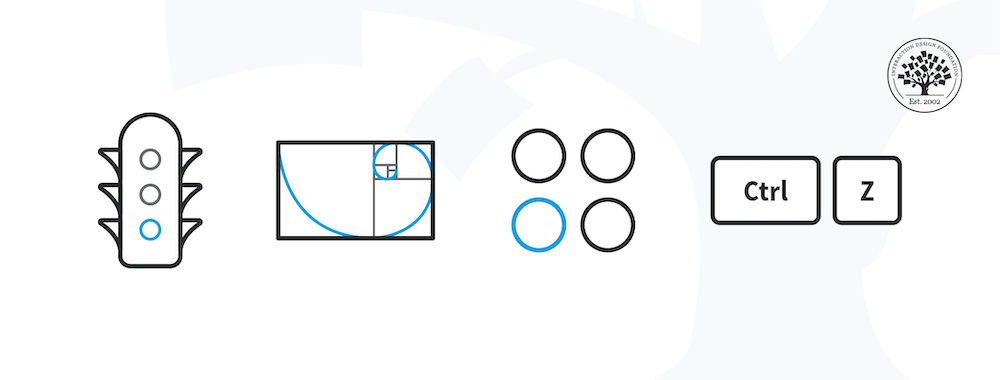Stand on the shoulders of giants and follow international standards

- 591 shares
- 8 years ago
Heuristic evaluation is a process where experts use rules of thumb to measure the usability of user interfaces in independent walkthroughs and report issues. Evaluators use established heuristics (e.g., Nielsen-Molich’s) and reveal insights that can help design teams enhance product usability from early in development.
“By their very nature, heuristic shortcuts will produce biases.”
— Daniel Kahneman, Nobel Prize-winning economist
In this session, I'm going to be talking about something that's referred to either as *expert evaluation* or *heuristic evaluation*. It's an evaluation done by one or more experts using a set of guidelines, and evaluating whether a solution meets those guidelines, how well it meets the guidelines, where it is deficient. So, expert or heuristic evaluations rely on the experience and the expertise of the evaluator.
So, you can't really do these things without understanding some of the basic concepts of interaction design and usability. I mentioned at the outset that you would be using guidelines, but those guidelines are *not* self-explanatory, so you have to understand what a good solution to a particular problem, what you're trying to achieve, would look like because as you're doing evaluations and as the industry changes on a regular basis,
then you have to appreciate whether or not the solutions you're seeing actually conform to the guidelines in front of you. Heuristics are these rules of thumb based on *good practice and known problems in design*. And they can be used from the very early design through to finished solutions. And you can even do expert or heuristic evaluations on just sketches if that would be helpful. It probably is more sensible a little bit later in the process, but certainly there's no impediment to looking at maybe the general layout of screens
and saying, well, this screen is quite possibly overly complicated for the problem in hand and the customers or users that you're trying to target. It is relatively inexpensive in that hiring in a consultant for one or two days is actually very much cheaper than conducting usability evaluations.
But immediately following, you'll notice that I mentioned that it's *not as effective as testing with real users*. And that is certainly the case. However, if you had a lot of novel designs and you wanted to get some idea about whether they were going to be effective, then inviting people in who actually do usability testing who are experts in the field will get you a lot of feedback without nearly so much cost as a lot of usability testing, which can get quite expensive just because of having to recruit, reward, hire facilities, and so on.
Jakob Nielsen published his book on User Interface Engineering back in the early 1990s, and these are his 10 basic UI (user interface) heuristics. And they haven't really changed, although when we actually go out to do something like benchmarking, we have a very much more detailed set of heuristics.
But these are a useful starting point, and they're talking about fairly generic concepts like *visibility of system status* and making sure that people understand where they are in the process. And that, of course, is a good thing no matter what you're doing. And detailed design does actually flow out of that – for example, letting people know that they've got things in their shopping basket. That is an example of the visibility of system status.
*Match between the system and the real world* – and that's something I've already alluded to when I was referring to terminology. The mapping sometimes is also physical. If you're talking about the natural tendency for increasing the quantity of something, it tends to be *up*. So, if you've got a slider, then up or to the right is 'more' and down or to the left is 'less'. And that's just what we call *natural mapping*. *User control and freedom* – being flexible, allowing people to go back and fix things.
Bear in mind that when user interface design was relatively new on sort of the large scale back in the 1990s when Windows 3.1, which was kind of the very first successful version of Windows, and of course the World Wide Web came around about the same time, it was uncommon, it was very unusual to have Undo functions. If you made a mistake and you needed to fix it, then you had to fix it yourself. There was no Control-Z or any kind of undo facility.
It was something that you had to do, and we take that for granted now, but it was not the case in the early days. *Consistency and standards* – users should not have to wonder whether different words, situations or actions mean the same thing. And this continues to be a problem in some areas. Certainly on intranets within large organizations, you would find that one department had its own set of visual guidelines with its own visual language which was totally different to the next department.
And if you were unlucky enough to have to move between those departments on the intranet, then you were in a bit of trouble. It doesn't happen so much these days with the web – e-commerce, for example; people do try very hard to make sure that users are going to have a fairly painless experience, and so we do tend to see things laid out with very *similar terminology and visual language* between totally different e-commerce sites. And to be honest, there,
Amazon, because they are so large and popular, has been something of a yardstick. And most people, when they're asking for advice on how to do something in e-commerce, I would refer them to the Amazon site and usually for very good reason. *Error prevention* is much more successful than dealing with errors. Certainly if you're having to discard data or reject data because users did not understand how you wanted it formatted, you should *not insist that people punctuate things exactly the way you need them*.
You can do whatever you like with the punctuation once you've got the basic data from them. If you want the phone numbers without punctuation, then take the punctuation out of the phone number after you've got it. If you don't like the spaces in the credit card numbers, then take the spaces out of the credit card numbers. So, that isn't something that Jakob talks about here, but it is a different form of error prevention, and I wholeheartedly recommended presenting users with errors and telling them they've done bad
and should do it over is *not good user experience*. *Recognition rather than recall* – and this is the basic premise of *all* user interfaces these days. That's the way that we've moved. Back in the 1970s and 1980s, most systems were command line based and you had to remember the syntax and spelling of the next command you wanted to enter. And when Windows and the Mac came along, both having stolen their designs from Xerox PARC,
then we got what we used to refer to as *WYSIWYG* – What You See Is What You Get. We don't talk about that much these days, but it was all about *recognition*, which people are very much better at, than recall; so, you can *recognize things much more easily* than you can recall them from scratch. *Flexibility and efficiency of use* – and usually there is a trade-off between what you might call *design for learning* and *design for efficiency*. That is all tied up with flexibility and efficiency of use.
By making things *flexible and efficient*, you're often making them *harder to use*. So, that's where the tension in the design comes in. *Aesthetic and minimalist design* – people like websites that look attractive and that they trust from a visual design perspective. And it is important that we *do not put too much in front of users at once*. And so, that's what we mean by minimalist design. *Help users recognize, diagnose and recover from errors* – something that's actually these days largely overlooked,
but it's still extremely important on more complex systems; things like Microsoft Office, most of the Adobe apps do have behind them a huge body of *help and documentation* – usually pretty awfully organized and presented, I have to say. It used to be better ten years ago, and we've just for some reason stopped worrying too much about that. So, it used to be that if you were looking at a dialog and you wanted help
with that dialog, you could click on a button and you would get help on that dialog. The best you can hope for these days is that you click on Help and you get taken to a website, and you now have to work out how you're going to find out about this specific issue that you are having with this specific dialog. So, things have gone a little bit backwards in recent years on that front.
Learn how to guide effective designs using heuristic evaluation.
In 1990, web usability pioneers Jakob Nielsen and Rolf Molich published the landmark article “Improving a Human-Computer Dialogue”. It contained a set of principles—or heuristics—which industry specialists soon began to adopt to assess interfaces in human-computer interaction. A heuristic is a fast and practical way to solve problems or make decisions.
© Interaction Design Foundation, CC BY-SA 4.0
In user experience (UX) design, professional evaluators use heuristic evaluation to determine a design’s/product’s usability systematically. As experts, they go through a checklist of criteria to find flaws that design teams overlook. The Nielsen-Molich heuristics state that a system should:
Keep users informed about its status appropriately and promptly.
Show information in ways users understand from how the real world operates, and in the users’ language.
Offer users control and let them undo errors easily.
Be consistent so users aren’t confused over what different words, icons, etc. mean.
Prevent errors – a system should either avoid conditions where errors arise or warn users before they take risky actions (e.g., “Are you sure you want to do this?” messages).
Have visible information, instructions, etc. to let users recognize options, actions, etc. instead of forcing them to rely on memory.
Be flexible so experienced users find faster ways to attain goals.
Have no clutter, containing only relevant information for current tasks.
Provide plain-language help regarding errors and solutions.
List concise steps in lean, searchable documentation for overcoming problems.
When you apply the Nielsen-Molich heuristics as an expert, you have powerful tools to measure a design’s usability. However, like any method, there are pros and cons:
Heuristics can help highlight potential usability issues early in the design process.
It is a fast and inexpensive tool compared with other methods involving real users.
Heuristic evaluation depends on the knowledge and expertise of the evaluators. Training the evaluators or hiring external evaluators might increase the time and money required for conducting the evaluation.
Heuristic evaluation is based on assumptions about what “good” usability is. As heuristics are based on research, this is often true. However, the evaluations are no substitute for testing with real users. These are, as the name suggests, only guidelines, and not rules that are set in stone.
Heuristic evaluation can end up giving false alarms. In their article, “Usability testing vs. heuristic evaluation: A head-to-head comparison,” Robert Bailey, Robert Allan and P. Raiello found that 43% of 'problems' identified by experimental heuristic evaluations were not actually problems. Furthermore, evaluators could only identify 21% of genuine usability problems in comparison with usability testing.
A vital point is that heuristic evaluation, however helpful, is no substitute for usability testing.
To conduct a heuristic evaluation, you can follow these steps:
Know what to test and how – Whether it’s the entire product or one procedure, clearly define the parameters of what to test and the objective.
Know your users and have clear definitions of the target audience’s goals, contexts, etc. User personas can help evaluators see things from the users’ perspectives.
Select 3–5 evaluators, ensuring their expertise in usability and the relevant industry.
Define the heuristics (around 5–10) – This will depend on the nature of the system/product/design. Consider adopting/adapting the Nielsen-Molich heuristics and/or using/defining others.
Brief evaluators on what to cover in a selection of tasks, suggesting a scale of severity codes (e.g., critical) to flag issues.
1st Walkthrough – Have evaluators use the product freely so they can identify elements to analyze.
2nd Walkthrough – Evaluators scrutinize individual elements according to the heuristics. They also examine how these fit into the overall design, clearly recording all issues encountered.
Debrief evaluators in a session so they can collate results for analysis and suggest fixes.
Take our course Mobile UX Design: The Beginner's Guide.
Take our course UX Design for Augmented Reality.
Find the refined Nielsen heuristics in the 10 Usability Heuristics for User Interface Design article.
When writing a heuristic evaluation report:
Start with a brief overview of the product or interface assessed and list the applied heuristics.
For each usability issue identified, explicitly state the violated heuristic, describe where it occurs in the interface, and explain its impact on user experience.
Provide specific recommendations to address each issue and prioritize them based on their severity to user experience.
Include visual aids like screenshots to help clarify the location and nature of the problems found.
For comprehensive insights and detailed instructions on conducting heuristic evaluations and writing practical reports, refer to How to Conduct a Heuristic Evaluation.
Heuristic evaluation differs from usability testing as it involves experts evaluating a product's user interface against established heuristics pinpointing usability issues, while usability testing involves real users completing tasks and identifying issues within the product. Heuristic evaluations are quicker and cost-effective, providing early insights, while usability testing offers an in-depth understanding of user interactions and experiences. For a comprehensive overview of usability testing, watch this video:
If you just focus on the evaluation activity typically with usability testing, you're actually doing *nothing* to improve the usability of your process. You are still creating bad designs. And just filtering them out is going to be fantastically wasteful in terms of the amount of effort. So, you know, if you think about it as a production line, we have that manufacturing analogy and talk about screws. If you decide that your products aren't really good enough
for whatever reason – they're not consistent or they break easily or any number of potential problems – and all you do to *improve* the quality of your product is to up the quality checking at the end of the assembly line, then guess what? You just end up with a lot of waste because you're still producing a large number of faulty screws. And if you do nothing to improve the actual process in the manufacturing of the screws, then just tightening the evaluation process
– raising the hurdle, effectively – is really not the way to go. Usability evaluations are a *very* important tool. Usability testing, in particular, is a very important tool in our toolbox. But really it cannot be the only one.
Heuristic evaluation is vital as it efficiently identifies usability problems in the design phase of product development, saving time and resources. Employing experts to review products against usability principles helps enhance user satisfaction and interaction and ensures a product's design is intuitive and user-friendly. This method is cost-effective and quick, making it a fundamental step in achieving optimal user experience and interface design.
An example of heuristic evaluation is when usability experts assess a website or application against established usability principles, or heuristics, to identify potential user experience issues. For instance, experts might evaluate the system's visibility of system status, user control, and freedom or match between the system and the real world. These evaluations help in uncovering usability problems early in the design process. For a detailed procedure for conducting a heuristic evaluation, refer to this article: How to Conduct a Heuristic Evaluation.
Compared to other methods, heuristic evaluation is a cost-effective and efficient way to determine design usability issues.
In this session, I'm going to be talking about something that's referred to either as *expert evaluation* or *heuristic evaluation*. It's an evaluation done by one or more experts using a set of guidelines, and evaluating whether a solution meets those guidelines, how well it meets the guidelines, where it is deficient. So, expert or heuristic evaluations rely on the experience and the expertise of the evaluator.
So, you can't really do these things without understanding some of the basic concepts of interaction design and usability. I mentioned at the outset that you would be using guidelines, but those guidelines are *not* self-explanatory, so you have to understand what a good solution to a particular problem, what you're trying to achieve, would look like because as you're doing evaluations and as the industry changes on a regular basis,
then you have to appreciate whether or not the solutions you're seeing actually conform to the guidelines in front of you. Heuristics are these rules of thumb based on *good practice and known problems in design*. And they can be used from the very early design through to finished solutions. And you can even do expert or heuristic evaluations on just sketches if that would be helpful. It probably is more sensible a little bit later in the process, but certainly there's no impediment to looking at maybe the general layout of screens
and saying, well, this screen is quite possibly overly complicated for the problem in hand and the customers or users that you're trying to target. It is relatively inexpensive in that hiring in a consultant for one or two days is actually very much cheaper than conducting usability evaluations.
But immediately following, you'll notice that I mentioned that it's *not as effective as testing with real users*. And that is certainly the case. However, if you had a lot of novel designs and you wanted to get some idea about whether they were going to be effective, then inviting people in who actually do usability testing who are experts in the field will get you a lot of feedback without nearly so much cost as a lot of usability testing, which can get quite expensive just because of having to recruit, reward, hire facilities, and so on.
Jakob Nielsen published his book on User Interface Engineering back in the early 1990s, and these are his 10 basic UI (user interface) heuristics. And they haven't really changed, although when we actually go out to do something like benchmarking, we have a very much more detailed set of heuristics.
But these are a useful starting point, and they're talking about fairly generic concepts like *visibility of system status* and making sure that people understand where they are in the process. And that, of course, is a good thing no matter what you're doing. And detailed design does actually flow out of that – for example, letting people know that they've got things in their shopping basket. That is an example of the visibility of system status.
*Match between the system and the real world* – and that's something I've already alluded to when I was referring to terminology. The mapping sometimes is also physical. If you're talking about the natural tendency for increasing the quantity of something, it tends to be *up*. So, if you've got a slider, then up or to the right is 'more' and down or to the left is 'less'. And that's just what we call *natural mapping*. *User control and freedom* – being flexible, allowing people to go back and fix things.
Bear in mind that when user interface design was relatively new on sort of the large scale back in the 1990s when Windows 3.1, which was kind of the very first successful version of Windows, and of course the World Wide Web came around about the same time, it was uncommon, it was very unusual to have Undo functions. If you made a mistake and you needed to fix it, then you had to fix it yourself. There was no Control-Z or any kind of undo facility.
It was something that you had to do, and we take that for granted now, but it was not the case in the early days. *Consistency and standards* – users should not have to wonder whether different words, situations or actions mean the same thing. And this continues to be a problem in some areas. Certainly on intranets within large organizations, you would find that one department had its own set of visual guidelines with its own visual language which was totally different to the next department.
And if you were unlucky enough to have to move between those departments on the intranet, then you were in a bit of trouble. It doesn't happen so much these days with the web – e-commerce, for example; people do try very hard to make sure that users are going to have a fairly painless experience, and so we do tend to see things laid out with very *similar terminology and visual language* between totally different e-commerce sites. And to be honest, there,
Amazon, because they are so large and popular, has been something of a yardstick. And most people, when they're asking for advice on how to do something in e-commerce, I would refer them to the Amazon site and usually for very good reason. *Error prevention* is much more successful than dealing with errors. Certainly if you're having to discard data or reject data because users did not understand how you wanted it formatted, you should *not insist that people punctuate things exactly the way you need them*.
You can do whatever you like with the punctuation once you've got the basic data from them. If you want the phone numbers without punctuation, then take the punctuation out of the phone number after you've got it. If you don't like the spaces in the credit card numbers, then take the spaces out of the credit card numbers. So, that isn't something that Jakob talks about here, but it is a different form of error prevention, and I wholeheartedly recommended presenting users with errors and telling them they've done bad
and should do it over is *not good user experience*. *Recognition rather than recall* – and this is the basic premise of *all* user interfaces these days. That's the way that we've moved. Back in the 1970s and 1980s, most systems were command line based and you had to remember the syntax and spelling of the next command you wanted to enter. And when Windows and the Mac came along, both having stolen their designs from Xerox PARC,
then we got what we used to refer to as *WYSIWYG* – What You See Is What You Get. We don't talk about that much these days, but it was all about *recognition*, which people are very much better at, than recall; so, you can *recognize things much more easily* than you can recall them from scratch. *Flexibility and efficiency of use* – and usually there is a trade-off between what you might call *design for learning* and *design for efficiency*. That is all tied up with flexibility and efficiency of use.
By making things *flexible and efficient*, you're often making them *harder to use*. So, that's where the tension in the design comes in. *Aesthetic and minimalist design* – people like websites that look attractive and that they trust from a visual design perspective. And it is important that we *do not put too much in front of users at once*. And so, that's what we mean by minimalist design. *Help users recognize, diagnose and recover from errors* – something that's actually these days largely overlooked,
but it's still extremely important on more complex systems; things like Microsoft Office, most of the Adobe apps do have behind them a huge body of *help and documentation* – usually pretty awfully organized and presented, I have to say. It used to be better ten years ago, and we've just for some reason stopped worrying too much about that. So, it used to be that if you were looking at a dialog and you wanted help
with that dialog, you could click on a button and you would get help on that dialog. The best you can hope for these days is that you click on Help and you get taken to a website, and you now have to work out how you're going to find out about this specific issue that you are having with this specific dialog. So, things have gone a little bit backwards in recent years on that front.
However, as discussed in the video, it may not be as effective as testing with real users when it comes to understanding the user experience fully. Heuristic evaluations, performed by experts, assess whether solutions conform to established usability guidelines, providing critical insights, especially in the early stages of design. Nonetheless, optimal outcomes usually result from combining this method with user testing, allowing designers to address expert opinions and real user experiences effectively.
To conduct a heuristic evaluation in UI, select a set of heuristics or guidelines like Jakob Nielsen’s 10 usability heuristics. Next, assemble a group of usability experts and assign them to evaluate the interface independently, identifying issues that violate the chosen heuristics. Compile the found issues, prioritize them based on severity, and generate a report detailing the problems and suggested improvements. This article, How to Conduct a Heuristic Evaluation, provides a comprehensive guide on effectively performing heuristic evaluations in UI design.
Start conducting your own heuristic evaluations with the help of this template:
A weakness of heuristic analysis is its reliance on experts’ judgments, which may not accurately reflect user experiences and can overlook user-centric issues. While cost-effective, this method might miss problems identified through user testing, leading to unresolved potential usability issues. The subjective nature of heuristic evaluation can result in varied findings among evaluators, necessitating thorough analysis to discern the most critical usability concerns. Despite these limitations, heuristic analysis remains a valuable tool in the early design stages to identify glaring usability issues efficiently.
A heuristic checklist is a structured tool used in heuristic evaluation to assess the user interface design against established usability principles or "heuristics." This checklist helps identify usability issues in a product, focusing on areas like user control, consistency, and error prevention. It's employed by experts to quickly spot potential problems in the early stages of design, aiding in the refinement of the user experience. For a more in-depth understanding and to explore the components of a heuristic checklist, refer to this article: How to Conduct a Heuristic Evaluation.
Start conducting your own heuristic evaluations with the help of any (or all!) of the different sets of heuristics:
Frank Spillers and Experience Dynamics’ USE Scorecard:
Jakob Nielsen and Rolf Molich’s universal usability heuristics:
Enrico Bertini, Silvia Gabrielli and Stephen Kimani’s modified heuristics for mobile:
The most common heuristic tool is Jakob Nielsen’s “10 Usability Heuristics for User Interface Design.” It’s widely recognized and utilized for its effectiveness in identifying usability issues in user interface (UI) design.
An illustration depicting Jakob Nielsen's 10 Usability Heuristics for User Interface Design. They’re called "heuristics" because they are broad rules of thumb and not specific usability guidelines.
Visibility of System Status: Keep users informed about what's going on through appropriate feedback within a reasonable time.
Match between System and the Real World: Use words and concepts familiar to the user, rather than system-oriented terms.
User Control and Freedom: Provide ways for users to easily reverse actions and exit from unintended states.
Consistency and Standards: Avoid user confusion by being consistent and following platform conventions.
Error Prevention: Eliminate error-prone conditions and confirm users' actions that have severe consequences.
Recognition Rather Than Recall: Minimize users' memory load by making objects, actions, and options visible and easily accessible.
Flexibility and Efficiency of Use: Allow users to tailor actions and provide shortcuts to accelerate experienced users’ interaction.
Aesthetic and Minimalist Design: Avoid unnecessary elements that can diminish the overall user experience.
Help Users Recognize, Diagnose, and Recover from Errors: Provide clear and plain-language error messages to help users understand, diagnose, and recover from errors.
Help and Documentation: Make help and documentation accessible, focused on the user's task, list concrete steps to be carried out, and not be overly large.
This set focuses on essential principles such as user control, error prevention, and consistency, offering a straightforward approach to improving user experience by addressing the most prevalent and impactful aspects of interface design.
To learn heuristic evaluation, take with the User Experience: The Beginner’s Guide course. This course provides detailed insights and practical knowledge on heuristic evaluation, enabling learners to enhance user experience effectively. Additionally, explore comprehensive articles and literature on heuristic evaluation on the IxDF website to deepen your understanding and skills in this area. Both resources are invaluable for anyone looking to master heuristic evaluation techniques in user interface design.
Remember, the more you learn about design, the more you make yourself valuable.
Improve your UX / UI Design skills and grow your career! Join IxDF now!
You earned your gift with a perfect score! Let us send it to you.
We've emailed your gift to name@email.com.
Improve your UX / UI Design skills and grow your career! Join IxDF now!
Here's the entire UX literature on Heuristic Evaluation (HE) by the Interaction Design Foundation, collated in one place:
Take a deep dive into Heuristic Evaluation (HE) with our course The Practical Guide to Usability .
Every product or website should be easy and pleasurable to use, but designing an effective, efficient and enjoyable product is hardly the result of good intentions alone. Only through careful execution of certain usability principles can you achieve this and avoid user dissatisfaction, too. This course is designed to help you turn your good intentions into great products through a mixture of teaching both the theoretical guidelines as well as practical applications surrounding usability.
Countless pieces of research have shown that usability is important in product choice, but perhaps not as much as users themselves believe; it may be the case that people have come to expect usability in their products. This growing expectation puts even more pressure on designers to find the sweet spot between function and form. It is meanwhile critical that product and web developers retain their focus on the user; getting too lost within the depths of their creation could lead to the users and their usability needs getting waylaid. Through the knowledge of how best to position yourself as the user, you can dodge this hazard. Thanks to that wisdom, your product will end up with such good usability that the latter goes unnoticed!
Ultimately, a usable website or product that nobody can access isn’t really usable. A usable website, for example, is often overlooked when considering the expansion of a business. Even with the grandest intentions or most “revolutionary” notions, the hard truth is that a usable site will always be the windpipe of commerce—if users can’t spend enough time on the site to buy something, then the business will not survive. Usability is key to growth, user retention, and satisfaction. So, we must fully incorporate it into anything we design. Learn how to design products with awesome usability through being led through the most important concepts, methods, best practices, and theories from some of the most successful designers in our industry with “The Practical Guide to Usability.”









We believe in Open Access and the democratization of knowledge. Unfortunately, world-class educational materials such as this page are normally hidden behind paywalls or in expensive textbooks.
If you want this to change, , link to us, or join us to help us democratize design knowledge!
